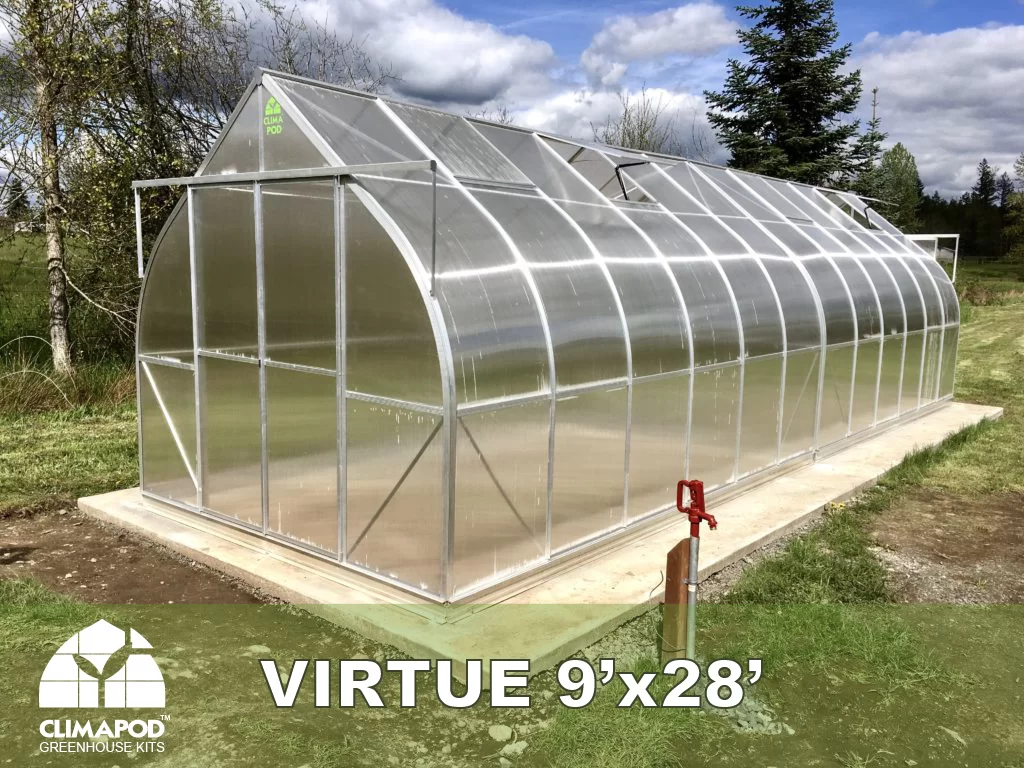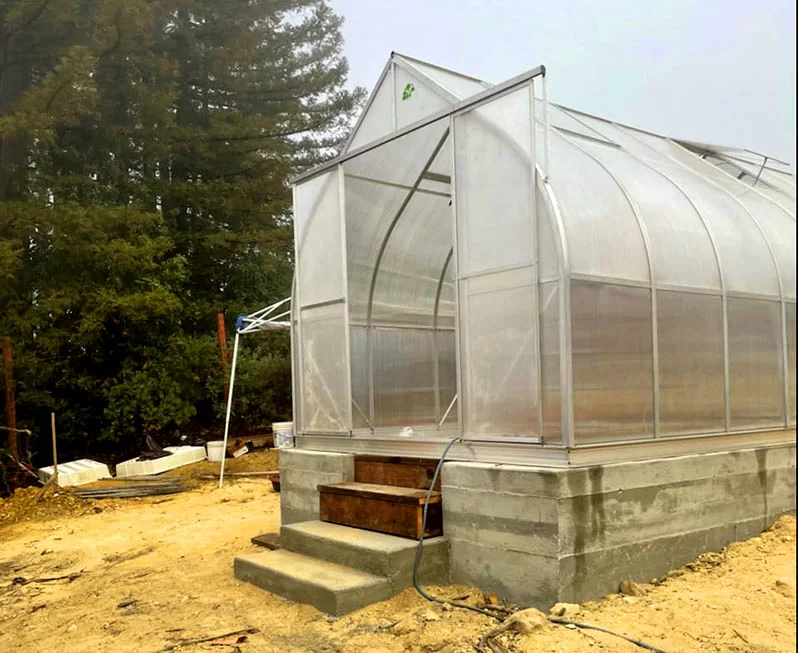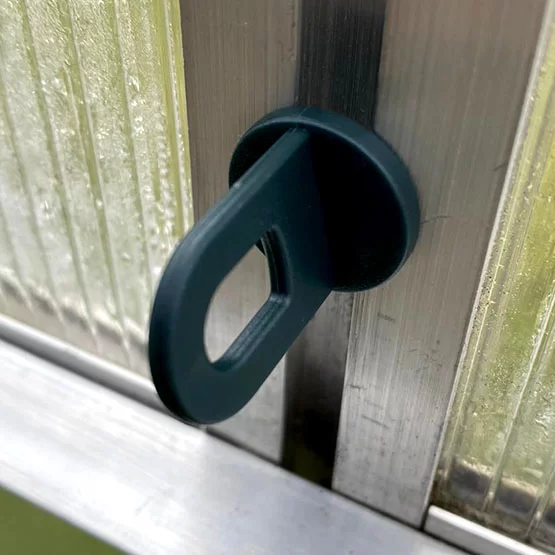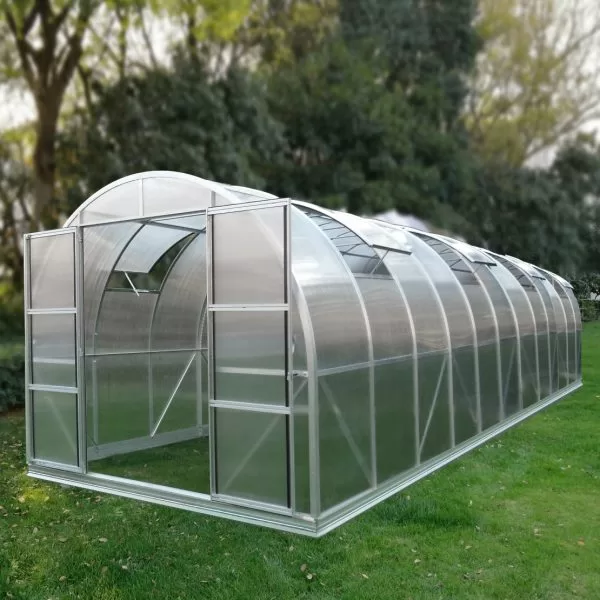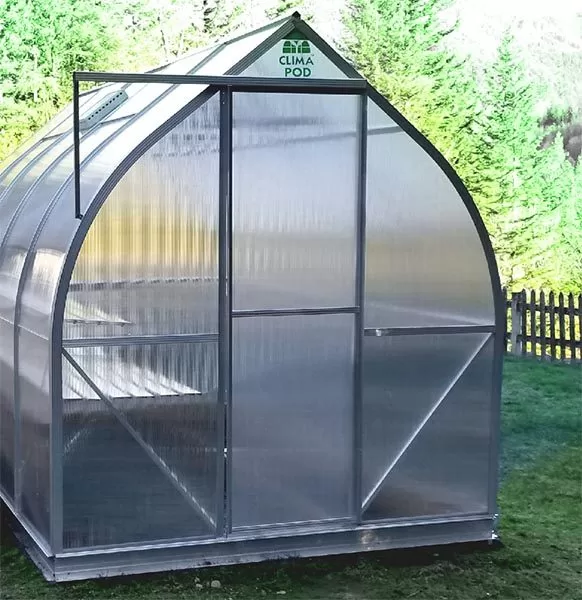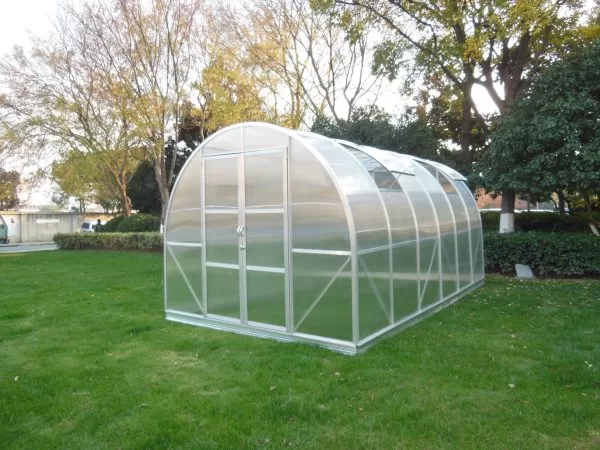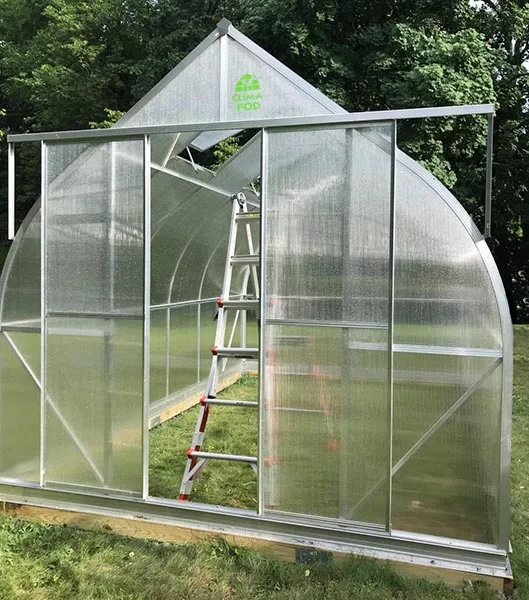It is best to install a greenhouse in the fall, because in the spring there may not be enough time to create a reliable greenhouse. Prices for greenhouses in fall are lower than in spring. But if the assembly of the frame and its coating with polycarbonate is fast, then creating the foundation for a large greenhouse is a rather long and laborious process.
If you have a flat area, a small greenhouse can be placed on a wooden beam treated with a special impregnation. This is the cheapest base. But if there is a slope, and the greenhouse will be 21-32 feet (6-10 meters) or more, you cannot do without a reliable foundation.
Why do you need a foundation for a greenhouse at all?
The package of greenhouses, as a rule, includes lugs – T-shaped legs about 30 cm long. Is it possible to do with only these legs and put the greenhouse directly on the ground? Some do just that – cheap and fast. However, the ground can shrink over time, causing the hull to skew. Doors will not open well, gaps will appear. The edges of polycarbonate sheets that are in contact with the ground will gradually break down. Every spring, you will have to level the greenhouse, laying bricks and stones. And if windy weather often happens in your area, then because of the windage, a small greenhouse may someday just fly away. Therefore, it is possible to install a greenhouse on the ground only temporarily.
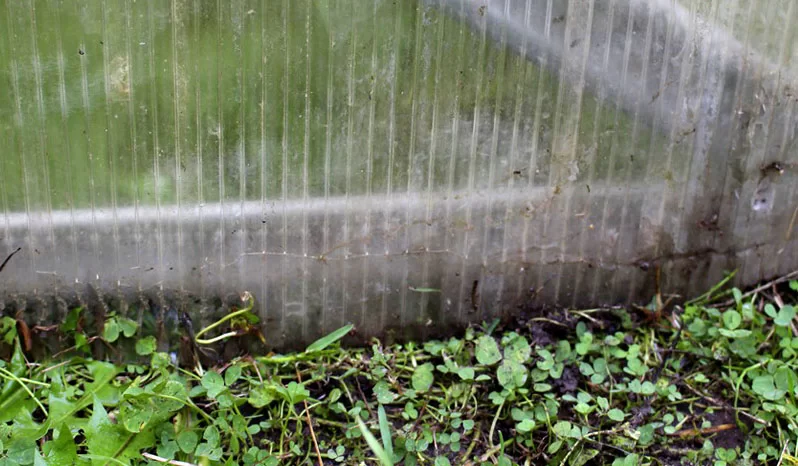
Therefore, we recommend that you adhere to the following tips when creating a cement foundation for your large greenhouse. In general, this is not a very difficult job. But it takes a long time for cement to finally harden, so you better start preparing the site for your greenhouse in advance.
Where to start building a foundation?

To begin with, using the building level, determine the height difference in the selected area and make the appropriate marks on the pegs. Then pull the thread around the perimeter of the greenhouse and check the diagonals: they should be the same. Set up the markings and dig a trench: remove the soil along the foundation line. Chernozem under the foundation is undesirable to leave. Make a trench about 40 cm deep if you already have sand at this level. Then make holes for the piles with a drill. The depth of the holes depends on the type of soil and your area. The base of the pile must be below the freezing depth of the soil. Usually 100-120 cm is enough.
How to make piles?
It is desirable to make piles with a thickened bottom. If you do not have a special drill for building piles with an expanded base, you can use any other one that will make the holes wider than your future pile. A sewer pipe can be used as a sleeve (shell) for a pile. For example, you can drill holes with a diameter of 150 mm, then pour 50 cm of concrete and insert a plastic pipe with a diameter of 110 mm into the hole. This way you get a pile with an extended base.
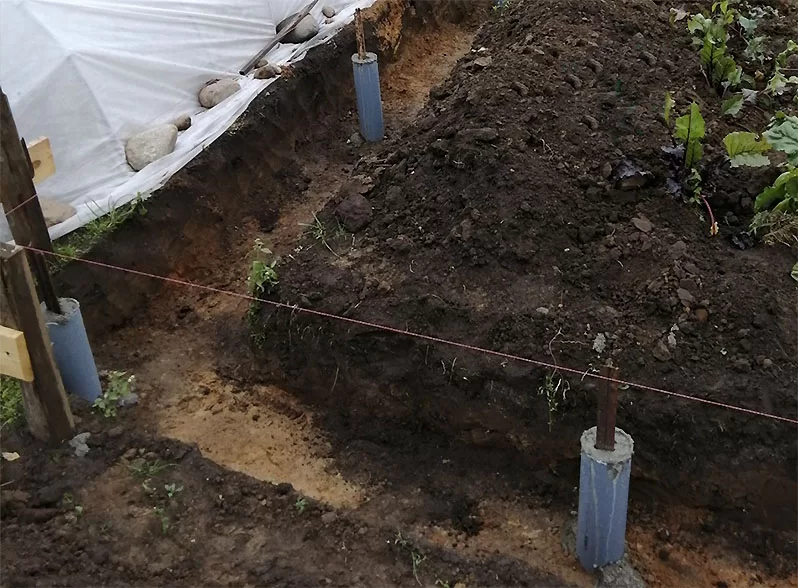
Now pour concrete into your plastic sewer pipe and immediately insert fittings inside. The length of the reinforcement must be calculated in such a way that its upper edge does not reach the foundation surface by several centimeters. So that the reinforcement does not “stick out” from the outside when everything is ready.
How to set up formwork?
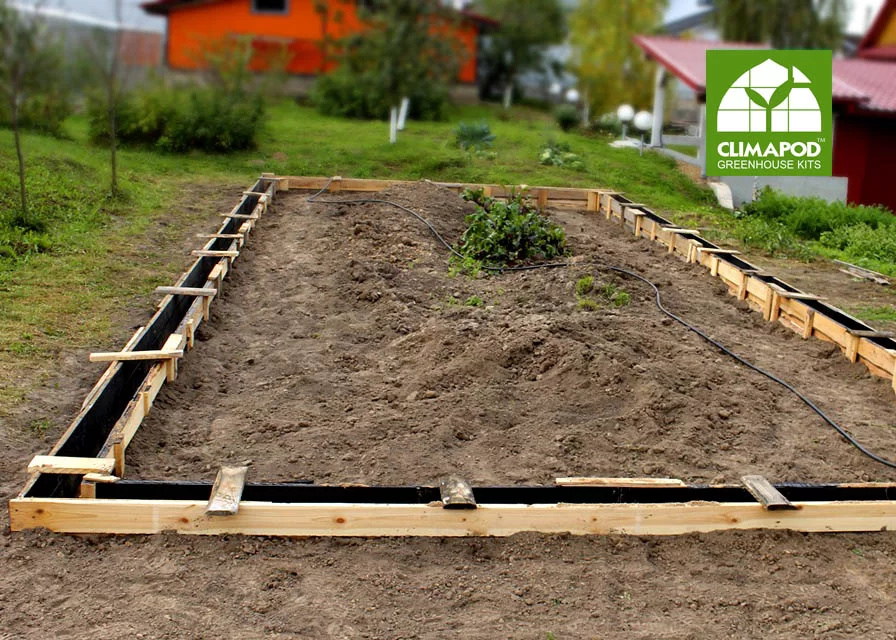
You can make formwork panels using boards and plywood. Plywood is nailed onto boards and treated on one side with bituminous mastic. After complete drying, insert the shields along the perimeter of the trench with the treated side inward. Then fill the trench with sand so that the pile “peeks” out of the sand by 5-7 cm. Check the width of the foundation around the entire perimeter and fix the boards on top with planks.

How to fill the foundation?
In order for the sand in the trench to shrink, thoroughly pour it with water. When the water is absorbed, you can start pouring the foundation. Gradually fill the formwork with concrete and lay several rows of reinforcement. It is important to overlap the reinforcement in order to provide the tape with sufficient strength. It is advisable to pour the foundation without interruption, at a time. During work, you need to remove air bubbles, compact the concrete with a construction vibrator or a shovel. After filling the formwork, level and smooth the top layer with a trowel or plaster trowel. If the weather is sunny outside, cover the foundation with a piece of polyethylene: the concrete must not dry out. The next day, pour water over it and cover again. Concrete gains its initial strength in a week. And only after that you can remove the formwork.
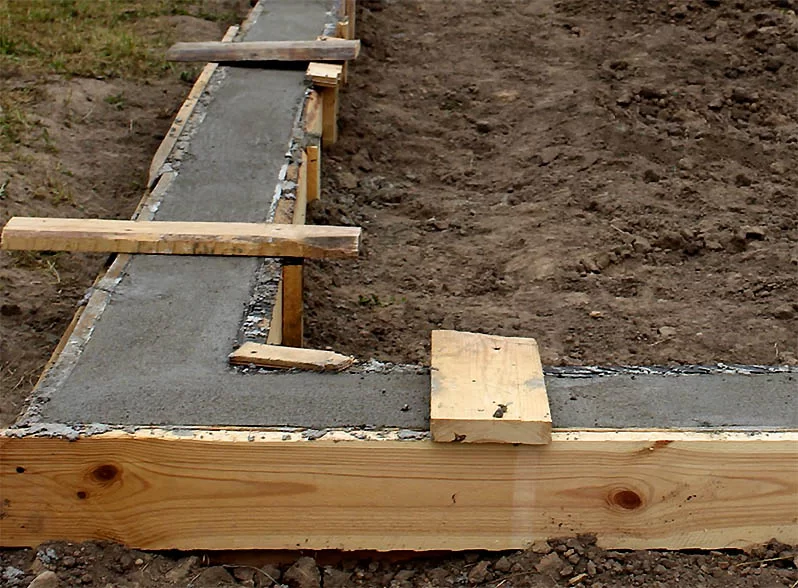
Remove the boards that fix the upper edges of the formwork, dig out the soil around the perimeter of the foundation and remove the shields. Then level the ground and you can start assembling the greenhouse frame.

Results: pile-strip foundation for a large greenhouse
You have built a pile-strip foundation – a reliable foundation for a large stationary greenhouse. And if you decide to create a solid and durable greenhouse that will serve you for many years and be able to protect your plants from bad weather, then pay attention to the Virtue XL series.
